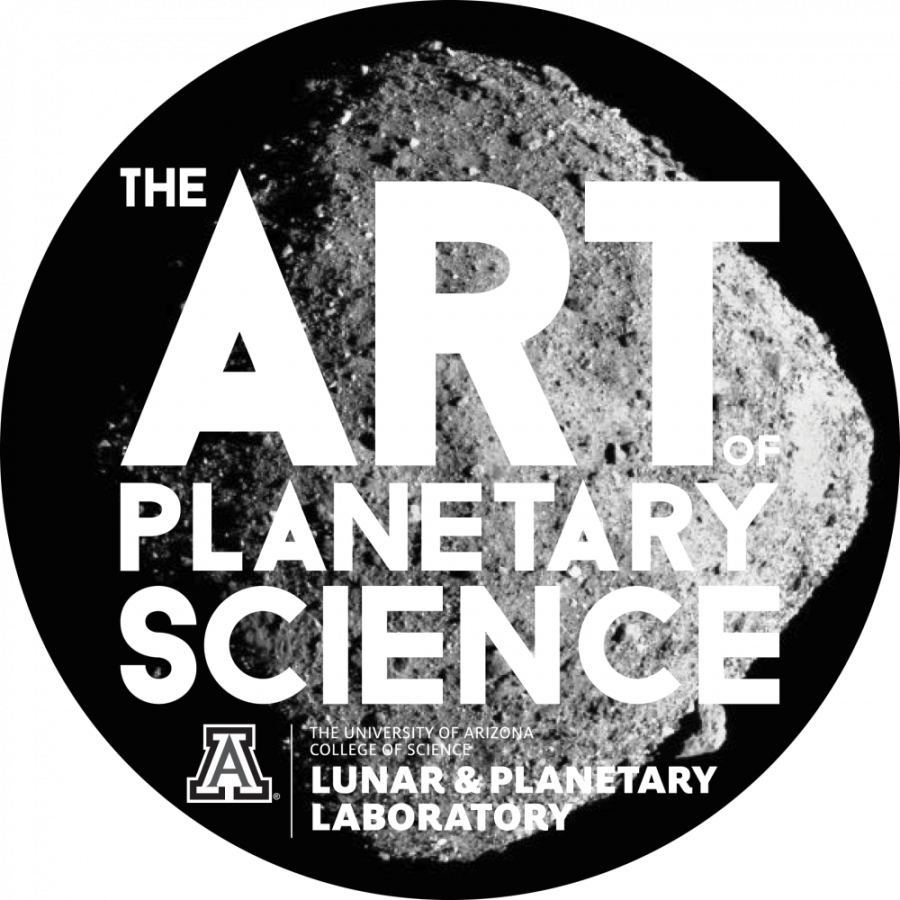The University of Arizona annually hosts an exhibition by the Art of Planetary Science to showcase science from an artistic perspective for the local community. This year, it was done virtually through livestreaming videos of slam poetry to galleries of data art, fine art and moon art.
The Art of Planetary Science finds it crucial to give this annual exhibition of space and planetary themed art because, according to the Art of Planetary Science, they are hoping to “inspire in others the same passion it inspires in us.”
This passion for space science that they want to present to the community is explained in their video — “Art, Science, and Why We Do What We Do” — when a student in the College of Science said, “I feel that the study of space science is important because it really helps you wrap your head around the idea of just size, and it’s with this comprehension that comes realization that we are all tiny and live on a very delicate planet. So through space study, you begin to realize that life is actually quite rare and it gives you a better appreciation for what we have up here on Earth.”
“It teaches us not to be so egotistical … makes us realize we aren’t the most important things in this universe,” said Hay Hamish, a student in the College of Science at the UA.
RELATED: UA professors’ outlooks on online STEM education six weeks into fall semester
However, the passion of students wasn’t just shown through their explanations of their infatuation and dedication to space science. It was, in fact, shown through all types of student-produced art.
Space art was shown in the form of data art with Adam Makarenko’s Kepler 22b. It is a miniature sculpture/diorama that Makarenko photographed. Makarenko’s art is considered so significant to the scientific community here because he takes the time to craft these dioramas by hand and photograph the pieces. “From these constructed realities he’s able to tell a story, otherwise impossible through conventional photography” as stated in Makarenko’s artist biography.
Art was also showcased through fine arts. Jan Lewis, a former science teacher and now a full-time artist, created a piece for the exhibition titled “Welcome to My World.”
“Welcome to My World” is an abstract painting created by Lewis that “suggest[s] images of unexplained terrain and sea,” as stated in the painting’s description. It is a one-of-a-kind painting that is for sale at $600.
The art didn’t stop there. Moon art was also on display and Simon Kregar, an award-winning artist, brought an acrylic canvas painting to the table. His piece is titled “We Came In Peace” and showcases a depiction of Apollo 11. The original is for sale for $800 and duplicates were made available at $75.
Overall, the Art of Planetary Science’s virtual exhibition proved to be a great success because the artwork and videos made to give the audience a different perspective of science and the universe were so wonderfully executed.
The Art of Planetary Science had the goal of bridging “the gap between communities and show how very interconnected the scientific and artistic processes are” and that was done through this virtual exhibition.
Follow Johnnie Mitchell on Twitter









